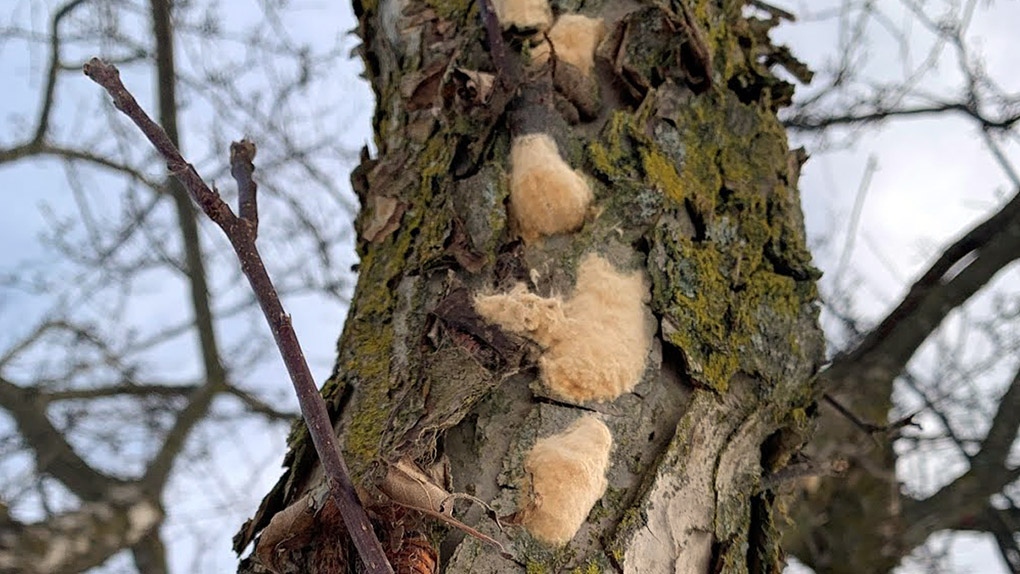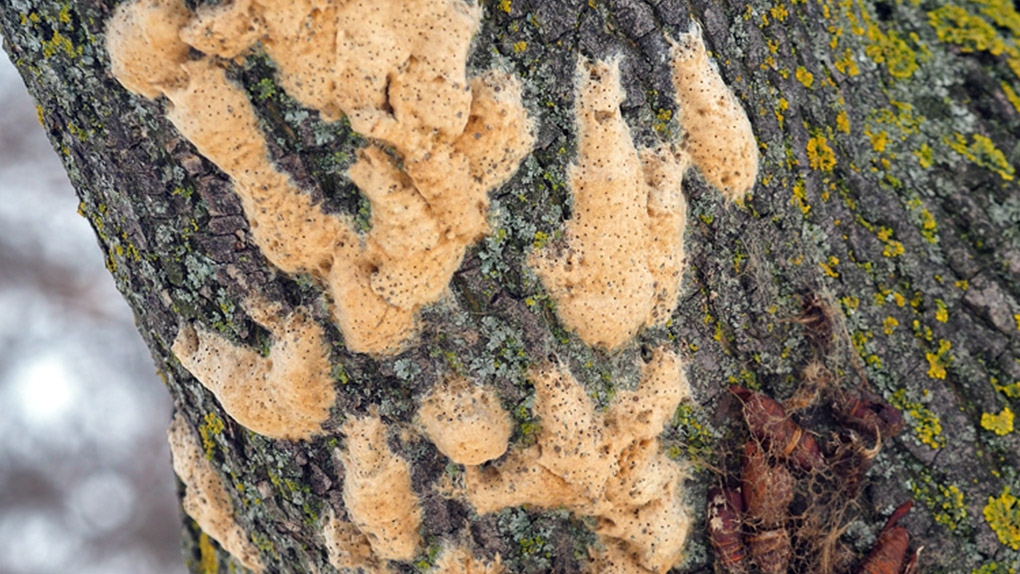Tips to help your trees with gardening expert Carson Arthur
Trees do so much for us.
Along with adding beauty, they provide oxygen, shade, soil preservation and wildlife habitat.
Gardening expert and author, Caron Arthur, wants us to do our part to say thanks and says that is more important now than ever.
"With more forest fires, drought, invasive insects, trees need our help," says Arthur.
Arthur is a regular contributor on CTV Ottawa’s News at Noon, and he shares four key things we can all do to take care of our neighbourhood trees.
- Remove the grass from the base of the trees to reduce fungal and insect infestations in the spring
- Remove all leaves that have fungal spores - black tar spot
- Remove dead or sick branches to prevent fungal infection into the wood.
- Remove egg cases from invasive species like gypsy moths
In a year when our forest canopy has been devastated by forest fires and the invasions of voracious moths, Carson hopes people will help in small ways that will bolster our trees.
"The biggest surprise is what’s happening with the urban tree canopy," explains Arthur.
"Trees in our city centres, right downtown in Ottawa, we’re losing them, and homeowners are not replacing them. So we have less and less trees in urban centres and for climate change that’s a real concern."
The passionate plant and tree lover, and owner of Carson’s Garden and Market in Prince Edward County, says there are some small things that you can do to make your trees a lot happier this year and in the future.
"You want to cut all the stuff around the bottom of the tree off all the grass, all of the weeds because that’s where insects like to over winter."
However, if you are using a string trimmer, please ensure yours has a guard.
"I’m a huge fan of it but one that doesn’t have a guard on the end is actually more of a threat to your trees than you might realize," says Arthur.
"Little strings, as they whip around, can actually remove the bark from the bottom of the tree."
"Make sure it has a guard on the front that protects the bark if not use pruners or hand shears instead to remove the grasses. It’s much safer."
When it comes to the removal of dead branches, this garden guy is blunt:
"Dead is dead! If you have a dead branch, take it off. If it’s got bark that’s peeling, you want to remove it because that’s where the insects will go to live."
Arthur says when removing dead branches, cut them tight to the tree.
"Do not paint them with the sealants, they don’t work. Instead go this route and the tree will heal it naturally."

Do you have black spots all over your leaves?
Arthur says leaves with black tar spots have to be dealt with this year to prevent a cycle of fungal infection.
"When the leaves fall off this year get out your handy leaf blowers, or your rakes and make sure they (leaves) are taken away from the area around the base of the tree. That’s where the spores are going to overwinter."
If not, Arthur says, that next spring, when the snow melts, spores will get back up into the canopy.
"It’s going to take a few years but eventually your tree will be nice and healthy and you won’t have any more of these fungal infections. Tar spot doesn’t hurt the tree, it’s just very unsightly," Arthur reassures.
Get ahead of canopy-eating moths
"Egg cases of gypsy moths look kind of like custard that hangs on the bottom of the branches," describes Arthur.
"You’re going to start seeing them over the next few weeks. Some people have already said they have sightings of them."
 Trees in Ottawa. (Photo courtesy: Carson Arthur)
Trees in Ottawa. (Photo courtesy: Carson Arthur)
What to do?
Carson Arthur says remove them just with a flat head screwdriver. Carefully of course, so you do not to damage your tree.
"You want to take them off and put them into a bucket of soapy water this will help control the infestation going into next year," said Arthur.
"The more egg cases, the more larva the more you can remove, the better your tree will be."
CTVNews.ca Top Stories

Young people 'tortured' if stolen vehicle operations fail, Montreal police tell MPs
One day after a Montreal police officer fired gunshots at a suspect in a stolen vehicle, senior officers were telling parliamentarians that organized crime groups are recruiting people as young as 15 in the city to steal cars so that they can be shipped overseas.
'It was joy': Trapped B.C. orca calf eats seal meat, putting rescue on hold
A rescue operation for an orca calf trapped in a remote tidal lagoon off Vancouver Island has been put on hold after it started eating seal meat thrown in the water for what is believed to be the first time.
Man sets self on fire outside New York court where Trump trial underway
A man set himself on fire on Friday outside the New York courthouse where Donald Trump's historic hush-money trial was taking place as jury selection wrapped up, but officials said he did not appear to have been targeting Trump.
Sask. father found guilty of withholding daughter to prevent her from getting COVID-19 vaccine
Michael Gordon Jackson, a Saskatchewan man accused of abducting his daughter to prevent her from getting a COVID-19 vaccine, has been found guilty for contravention of a custody order.
Mandisa, Grammy award-winning 'American Idol' alum, dead at 47
Soulful gospel artist Mandisa, a Grammy-winning singer who got her start as a contestant on 'American Idol' in 2006, has died, according to a statement on her verified social media. She was 47.
She set out to find a husband in a year. Then she matched with a guy on a dating app on the other side of the world
Scottish comedian Samantha Hannah was working on a comedy show about finding a husband when Toby Hunter came into her life. What happened next surprised them both.
B.C. judge orders shared dog custody for exes who both 'clearly love Stella'
In a first-of-its-kind ruling, a B.C. judge has awarded a former couple joint custody of their dog.
Saskatoon police to search landfill for remains of woman missing since 2020
Saskatoon police say they will begin searching the city’s landfill for the remains of Mackenzie Lee Trottier, who has been missing for more than three years.
Shivering for health: The myths and truths of ice baths explained
In a climate of social media-endorsed wellness rituals, plunging into cold water has promised to aid muscle recovery, enhance mental health and support immune system function. But the evidence of such benefits sits on thin ice, according to researchers.
































